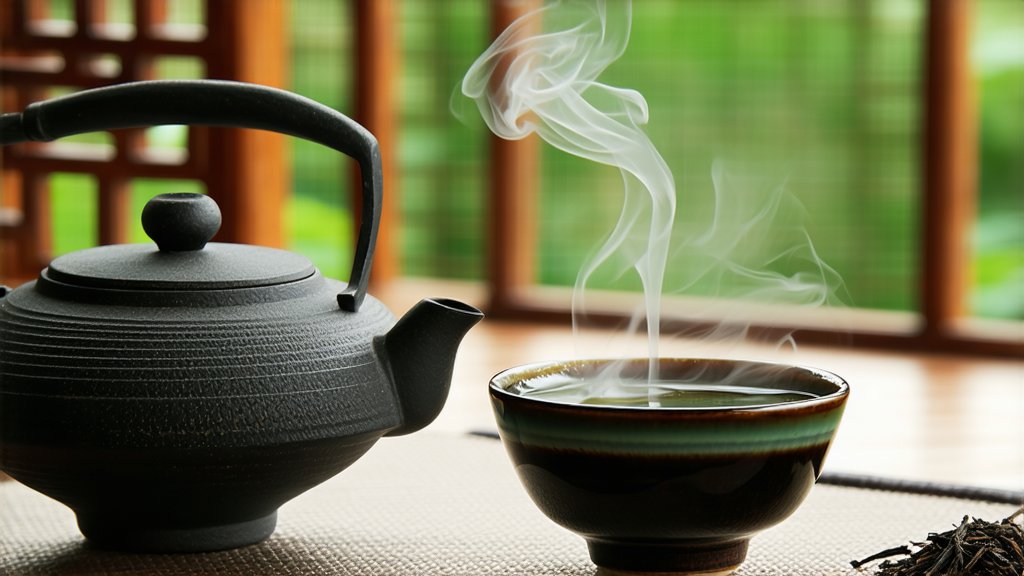
In the vast landscape of Chinese tea culture, few varieties capture the imagination and palate quite like Pu-erh tea. This unique dark tea, with its rich history, complex flavors, and numerous health benefits, stands as a testament to the artistry and tradition that define China's tea heritage. As an expert in Chinese tea culture and a master of tea art, I am delighted to guide you through the fascinating world of Pu-erh tea, exploring its origins, varieties, production methods, and the art of its appreciation.
A Glimpse into History
Pu-erh tea traces its roots back to the ancient tea-growing regions of Yunnan Province in southwestern China. Its name is derived from the Pu'er region, which has been a significant hub for tea trade since as early as the Tang Dynasty (618-907 AD). Over centuries, Pu-erh tea evolved, becoming particularly popular during the Ming (1368-1644) and Qing (1644-1912) dynasties. It was during these times that the unique post-fermentation process, crucial to Pu-erh’s development, was refined.
Varieties of Pu-erh Tea
Pu-erh tea comes in two primary forms: raw (Sheng) and ripe (Shou). Each type offers distinct characteristics and aging potential, appealing to different tastes and preferences.
-
Raw Pu-erh (Sheng): This variety undergoes natural fermentation over time, gradually maturing and developing its flavor profile. Fresh Sheng Pu-erh is known for its bright, astringent taste, which mellows and becomes more complex with age. Enthusiasts often collect Sheng Pu-erh with the anticipation of enjoying its evolving flavors over decades.
-
Ripe Pu-erh (Shou): Unlike Sheng, Shou Pu-erh undergoes a controlled fermentation process called "wet piling," which accelerates the aging process. This results in a tea with a smoother, earthier flavor and a deep red color. Ripe Pu-erh is typically ready for consumption shortly after production, offering immediate gratification without the need for lengthy storage.
The Craft of Production
The production of Pu-erh tea is an intricate process that combines traditional techniques with precise craftsmanship. Here's an overview of the steps involved:
-
Picking and Withering: High-quality leaves are hand-picked from ancient tea trees or cultivated gardens. These leaves are then spread out to wither under the sun, reducing moisture content and preparing them for further processing.
-
Fixation: The withered leaves are quickly fried or baked to halt enzymatic activity, preserving their green color and fresh aroma. This step is crucial in determining the tea's initial character.
-
Rolling: The fixed leaves are rolled into tight spirals or cakes, shaping them for fermentation and compact storage.
-
Fermentation: For Sheng Pu-erh, the leaves are left to naturally ferment over years, influenced by factors like humidity, temperature, and microbial activity. Shou Pu-erh undergoes wet piling, where piles of tea are kept moist and warm, promoting rapid fermentation and microbial growth.
-
Drying and Aging: After fermentation, the tea is dried and may be stored for further aging, allowing its flavors to deepen and mature.
The Art of Appreciation
Appreciating Pu-erh tea is not merely about drinking; it's an experience that engages all senses and invites contemplation. Here are some tips for savoring this exquisite tea:
-
Preparation: Use a Yixing clay teapot or a Gaiwan (a traditional Chinese lidded bowl) to brew Pu-erh tea. These vessels help enhance the tea's flavors and aromas. Rinse the tea leaves briefly with hot water before the first infusion to 'wake up' the leaves.
-
Water Temperature: Boiling water is ideal for brewing Pu-erh tea, especially for aged leaves. Younger leaves may benefit from slightly cooler temperatures to avoid bitterness.
-
Infusion Time: Start with short infusions, around 5-10 seconds, gradually increasing the steeping time for subsequent infusions. Pu-erh tea can be brewed multiple times, each infusion revealing new layers of flavor.
-
Observation: Pay attention to the tea's color, clarity, and aroma. Note how these elements evolve with each infusion.
-
Savoring: Taste the tea mindfully, allowing its complexity to unfold on your palate. Notice the balance between astringency, sweetness, and umami flavors. Reflect on the tea's texture and mouthfeel, which can range from silky to robust.
Health Benefits
Beyond its sensory pleasures, Pu-erh tea boasts several health benefits, making it a cherished beverage worldwide. Some of these benefits include:
-
Digestive Aid: Pu-erh tea has been traditionally used to aid digestion and alleviate bloating due to its probiotic properties.
-
Weight Management: Studies suggest that Pu-erh tea may help regulate lipid metabolism and assist in weight loss efforts.
-
Antioxidants: Rich in polyphenols and other antioxidants, Pu-erh tea helps combat oxidative stress and supports overall health.
-
Cardiovascular Health: Regular consumption of Pu-erh tea has been linked to improved heart health by lowering cholesterol levels and blood pressure.
-
Mental Clarity: The caffeine and L-theanine content in Pu-erh tea provide a gentle boost in focus and mental alertness without causing jitteriness.
Conclusion
Pu-erh tea is more than just a beverage; it embodies centuries of cultural heritage, artisanal skill, and profound wisdom about nature's cycles. Whether you're drawn to its historical significance, intrigued by its fermentation process, or simply captivated by its depth of flavor, Pu-erh tea offers a journey worth embarking upon. As you delve into the world of this remarkable tea, remember that each cup carries with it a story—one that spans generations, cultures, and continents. So sit back, relax, and let the rich heritage and art of Pu-erh tea transport you to the heart of Chinese tea culture.